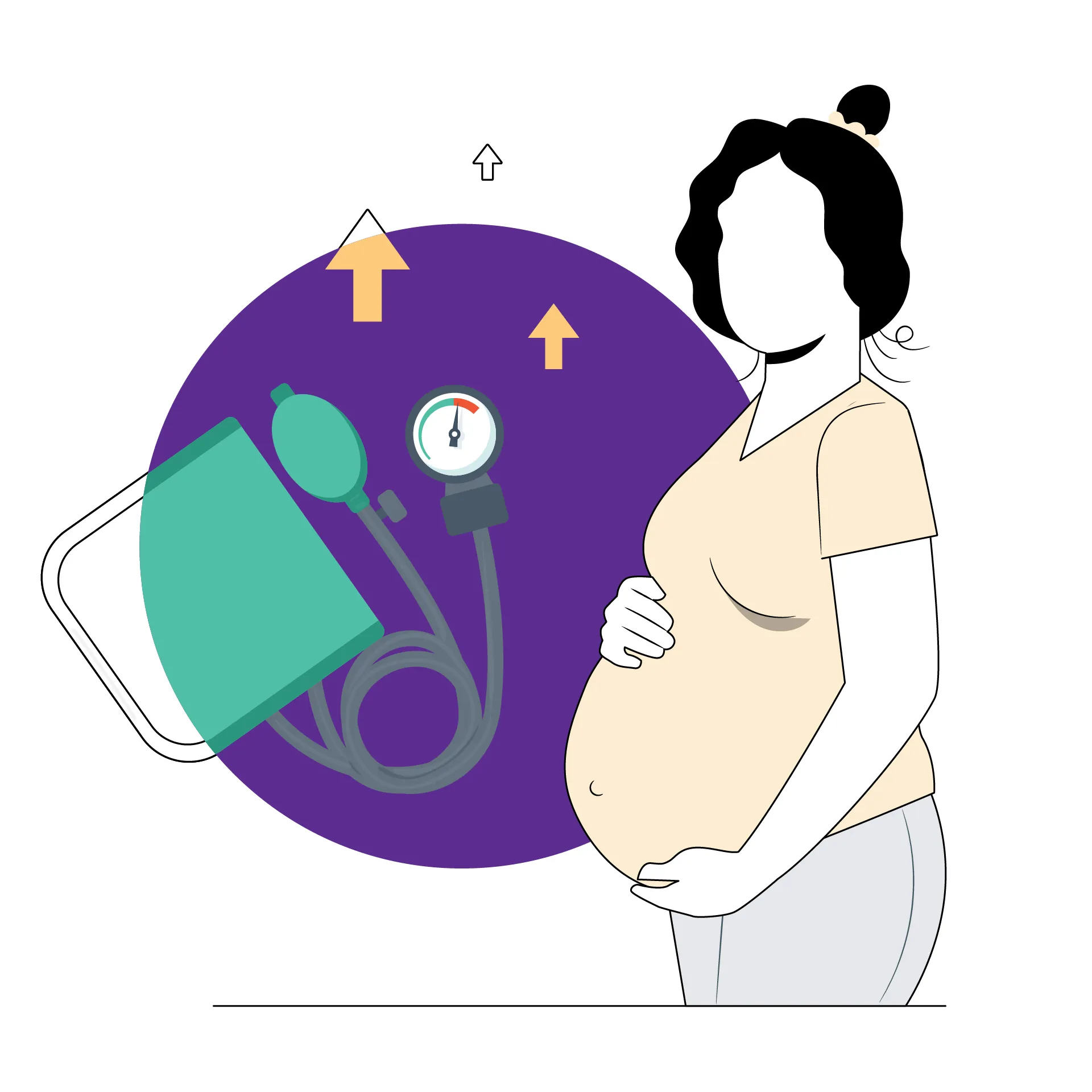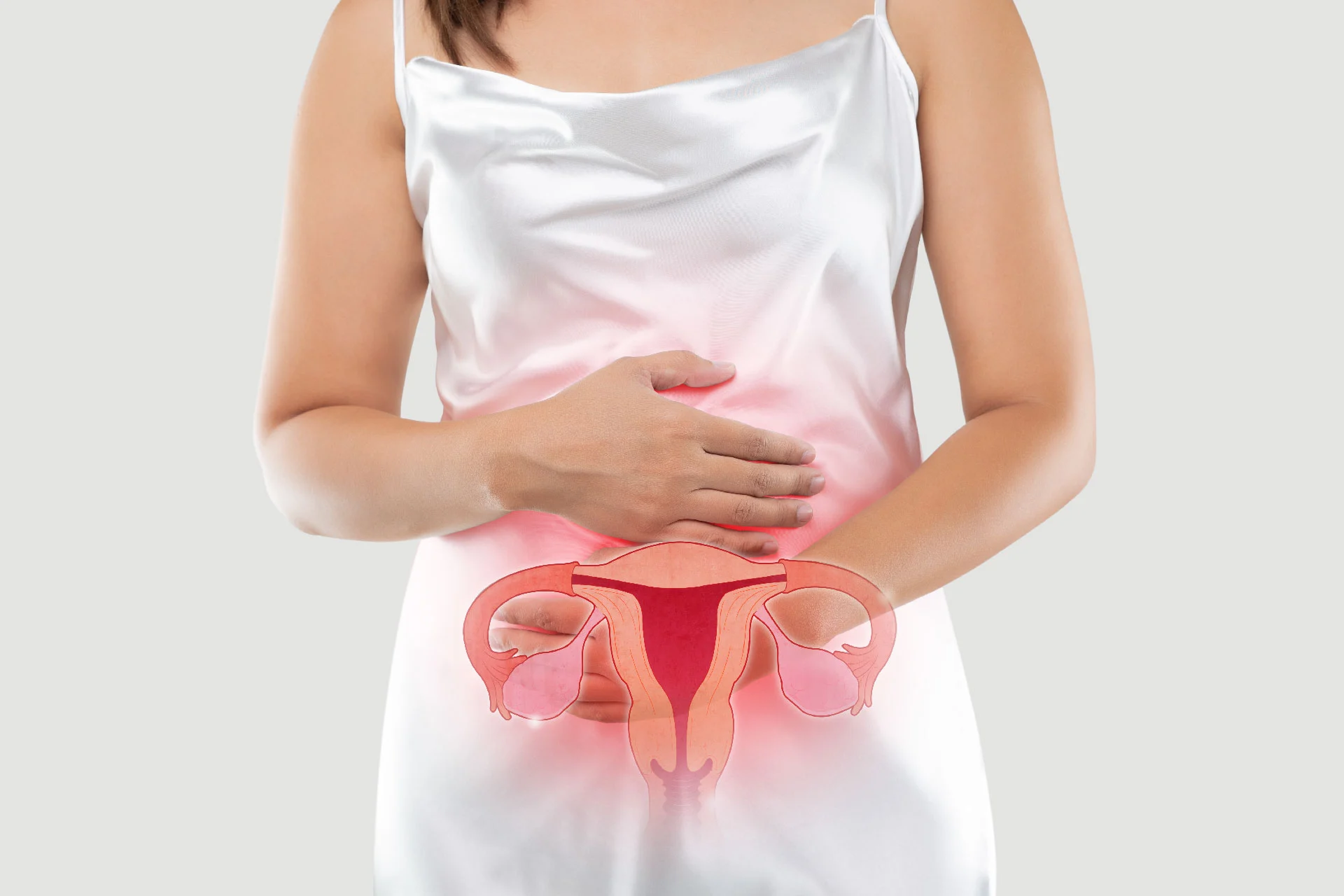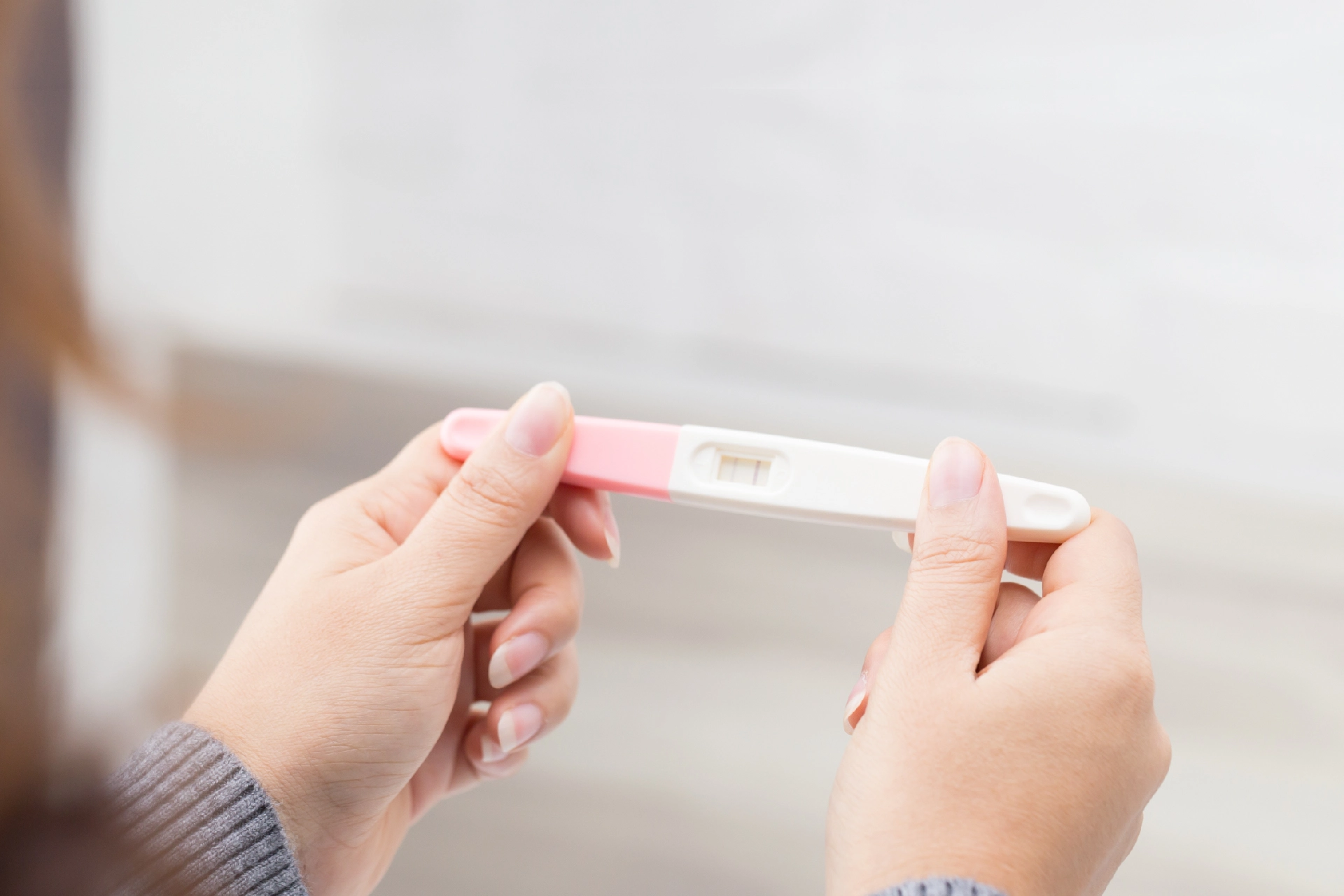Gynaecologist and Obstetrician | 8 min read
Preeclampsia: Diagnosis, Causes, Treatment, and Prevention
Medically reviewed by
Table of Content
Synopsis
Women with preeclampsia will develop a high blood pressure level and have high protein in their urine. This condition can occur anytime during the latter half of pregnancy or in the first few days after delivery. A pregnant woman must call her physician immediately if she experiences any symptoms of preeclampsia. The only cure for this condition is the delivery of the fetus and the placenta.
Key Takeaways
- Preeclampsia occurs during pregnancy or post-delivery due to high blood pressure and one associated symptom such as prot
- Typically, preeclampsia occurs after the 20 weeks of pregnancy and, in some cases, after delivery
- Eclampsia is a severe progression of preeclampsia that can result in seizures
Preeclampsia is known as a pregnancy-related health complication where your blood pressure may shoot up, and you may have a high amount of protein in the urine, indicating kidney damage. You must know that preeclampsia usually manifests after the twenty weeks of the pregnancy for women who have had blood pressure in the normal range previously. Rarely this condition can also develop after delivery, known as postpartum preeclampsia. Preeclampsia may be fatal for both mother and child if not treated. Treatment steps include early delivery, careful monitoring of BP, and medication to lower it.
Preeclampsia Meaning
It is a severe blood pressure condition that develops during the later pregnancy stage, mainly after the 20th week. Women with preeclampsia have high blood pressure (hypertension greater than 140/90 mmHg) [1] and high protein levels in the urine (proteinuria). Since preeclampsia may also affect other organs that can be dangerous for both mother and the fetus, it needs to be treated early.
Preeclampsia can also put stress on the heart and other organs, affect the blood supply to the placenta, impair kidney/liver functions, and cause fluid build-up in your lungs. The first sign of kidney malfunction is the protein amount in the urine.
It can also lead to eclampsia, a more severe condition that may bring about seizures in the individual. The cure for preeclampsia is to give birth, and even after delivery, the symptoms may last up to 6 weeks. Therefore, catching and treating preeclampsia early can lower the chances of long-term health problems for both mother and baby.
Symptoms of Preeclampsia
The symptoms of preeclampsia usually begin to show up after 20 weeks into the pregnancy, [2] although symptoms may appear earlier in rare cases. The most common signs of preeclampsia are:
- High blood pressure
- Excessive protein in the urine
- Pulmonary edema
- Nausea
- Vomiting
- Severe headache
- Abdominal pain
- Short of breath due to fluid collection in the lungs
- Changes in vision or temporary vision loss
- Sudden swelling of feet, hands and weight gain
- Decrease in platelet levels or thrombocytopenia
- Urinating less often
- Abnormal liver function
- Abnormal kidney function
During your routine examination, your gynecologist may find that your blood pressure is 140/90 or more. In addition, urine tests may show protein in your urine, low platelet levels, or unusual liver enzymes.

Causes of Preeclampsia
The placenta makes proteins and other substances that play an essential role in the progression of labor. If the placenta is not deep inside the uterus to establish a healthy blood supply with the mother, the fetus may not receive adequate oxygen and nutrients in later pregnancy stages. It could be a problem after the 20th week of gestation as the fetus proliferates. If the blood vessels do not develop properly, it may damage the mother's liver and kidneys and cause the clinical condition called preeclampsia.
Gynecologists have not identified the exact cause of preeclampsia, but potential factors include:
- Genetic factors
- Autoimmune disorders
- Blood vessel damage
- Inadequate blood flow to the uterus
- Poor nutrition and high body fat
A few risk factors that can increase the chances of developing preeclampsia are:
- Multiple pregnancies
- Women over the age of 40
- First-time pregnancy
- Having preeclampsia in previous pregnancies
- Being obese
- Having a history of health conditions such as diabetes, hypertension, kidney disease, lupus, etc.
- Family history of preeclampsia
- Becoming pregnant via IVF methods
There is no way to prevent preeclampsia, but early and consistent prenatal care can help identify the symptoms early, begin treatment and avoid complications.
Preeclampsia Treatment
The single treatment for preeclampsia is the delivery of the baby and the placenta. In addition, medication to lower the blood pressure can reduce the risk of stroke in the patient, but it does not improve the fundamental abnormalities or disease progression.
Preeclampsia treatment steps depend upon the extent of the condition and the fetus's gestational age. In addition, the delivery method (natural or cesarean) depends upon several factors, but in most cases, vaginal delivery may be possible.
Oxytocin is given to induce labor. However, if labor does not progress for some time or complications that necessitate quick delivery, a cesarean birth may be necessary.
Treatment at term: Pregnancies with preeclampsia complications that arise after 37 weeks are delivered to resolve the condition and prevent harm to the mother and the baby. Full-term fetuses typically are at low risk of complications and do not need neonatal care.
Treatment before term: If preeclampsia develops before 37 weeks, but its features are not very severe, the delivery can be delayed up to 37 weeks to let the fetus grow and mature. However, if complications develop, immediate delivery is necessary to protect the mother and the fetus. If delivery is delayed in women with preeclampsia before 37 weeks, the mother and her fetus are closely monitored to prepare for risks of preterm delivery.
Maternal monitoring: In delayed deliveries, the mother is hospitalized and monitored constantly. The steps include blood tests, blood pressure measurements, liver and kidney function tests, and platelet count tests. Sometimes women may be allowed to stay home, self-check their blood pressure, make occasional visits to their gynecologist, and call them immediately if any severe symptoms develop.
Fetal monitoring: Fetal monitoring includes conducting ultrasound examinations and non-stress tests. The non-stress test is performed by placing a device on the mother's abdomen to measure the fetus' heart rate.
Ultrasound can help monitor the fetus' growth and evaluate its well-being and proper blood flow via the umbilical cord. A biophysical profile assesses fetal movement, breathing, and other parameters, and scores are assigned. A low score indicates that early delivery will be beneficial to the fetus.
Steroids: Fetuses delivered prematurely may not have fully developed lungs. Hence, women who need preterm delivery are usually given steroid injections to quicken fetal lung development. The steroids can also reduce other complications of premature birth, such as hemorrhage.
Post delivery: Typically, preeclampsia symptoms should resolve within 48 hours once the fetus is delivered, and the liver and kidney return to normal functioning within a few months. But if you had preeclampsia during your pregnancy, you must closely follow up with your doctor. Also, contact your physician immediately if you notice any preeclampsia after delivery (even in an uncomplicated pregnancy). You can also get an online appointment with your gynecologist to perform regular blood pressure checks.

Additional Read: Hypertension during pregnancy
How to Reduce the Risk of Getting Eclampsia?
For people with a risk of getting preeclampsia, some steps can be taken before and during pregnancy to lower the chances of getting it. These steps include:
- Controlling your blood pressure and blood sugar (if you had high diabetes or high blood pressure previously)
- Maintaining a regular exercise routine
- Take a multivitamin for women regularly
- Getting sufficient sleep
- Keeping a healthy diet low in sodium
- Avoid alcohol and caffeine
Taking a baby aspirin daily has proven to reduce your risk of developing preeclampsia significantly. However, if you exhibit any preeclampsia risk factors, your doctor may recommend taking aspirin early in pregnancy (around 12 weeks).
Complications of Preeclampsia Include
Fetal Growth Restriction
Since preeclampsia affects the arteries taking blood to the placenta, the baby will not receive enough oxygen, blood, and nutrients. As a result, it can often lead to fetal growth restriction.
Preterm Birth
Preeclampsia might cause unplanned preterm birth or delivery before 37 weeks. A premature baby has a high risk of difficulties in feeding and breathing, vision and hearing problems, cerebral palsy, and developmental delays. Treatment before preterm delivery may reduce these risks.
Placental Abruption
Your risk of placental abruption can be increased by this condition of preeclampsia. In preeclampsia, the placenta detaches from the wall of the uterus before the delivery happens. Sometimes, such type of severe abruption can cause bleeding that can be fatal for both mother and baby.
HELLP Syndrome
This severe form of preeclampsia stands for hemolysis (i.e., destruction of the red blood cells), a low platelet count, and increased liver enzymes. This condition affects many organs, can cause long-term women health issues to the mother, and can be fatal to both the mother and baby.
Eclampsia
Eclampsia causes the onset of seizures, coma, and signs of preeclampsia. Eclampsia can occur even without any prior observed signs of eclampsia. Other symptoms of eclampsia include vision problems, severe headaches, and mental confusion. This condition can occur before, during, or post-delivery.
Damage to Other Organs
It can cause kidney and liver damage, impair lungs, heart, and eyes and even cause a brain stroke. The severity of organ damage depends upon the severity of preeclampsia.
Cardiovascular Disease
Sometimes, preeclampsia can raise the risk of heart and cardiovascular heart disease in the future. This chance is even higher if you have had preeclampsia more than once or had a preterm delivery.
Keeping yourself and your baby safe and healthy during pregnancy is essential. It includes going to regular examinations, eating a balanced diet, and taking prenatal vitamins. Even with proper care, preeclampsia is unavoidable during or after pregnancy, and it needs prompt medical attention and treatment. It is wise to get women health insurance specifically for such pregnancy complications to ensure peace of mind. Book an online appointment with Bajaj Finserv Health and know all that you need to for keeping yourself healthy!
References
- https://www.acog.org/womens-health/faqs/preeclampsia-and-high-blood-pressure-during-pregnancy
- https://www.nhs.uk/conditions/pre-eclampsia/symptoms/
Disclaimer
Please note that this article is solely meant for informational purposes and Bajaj Finserv Health Limited (“BFHL”) does not shoulder any responsibility of the views/advice/information expressed/given by the writer/reviewer/originator. This article should not be considered as a substitute for any medical advice, diagnosis or treatment. Always consult with your trusted physician/qualified healthcare professional to evaluate your medical condition. The above article has been reviewed by a qualified doctor and BFHL is not responsible for any damages for any information or services provided by any third party.





